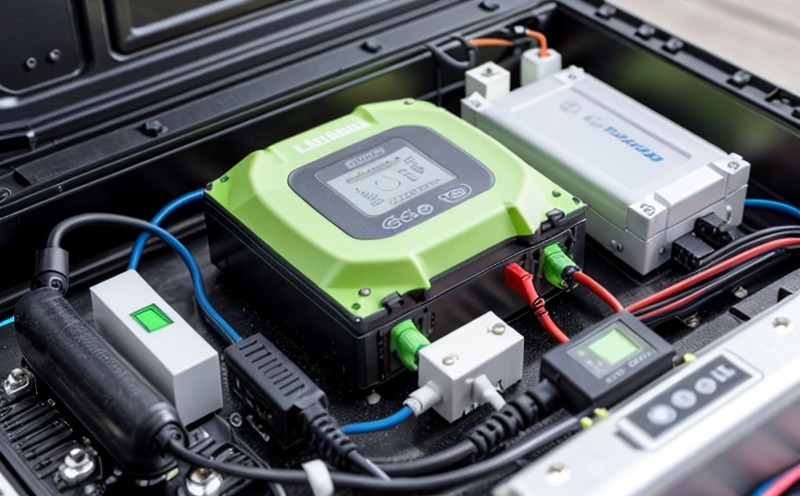ANSI C18.3M Lithium-Ion Button Cell Testing
The ANSI C18.3M standard specifies a comprehensive set of tests designed to evaluate the performance and safety characteristics of lithium-ion button cells used in various applications such as medical devices, consumer electronics, and portable power sources.
This standard is crucial for ensuring that the lithium-ion button cells meet stringent quality and safety requirements. The testing protocol covers a broad range of parameters including electrical resistance, capacity retention, internal impedance, self-discharge rate, temperature cycling, and more. Compliance with ANSI C18.3M ensures that manufacturers can deliver reliable, safe products to the market.
The tests are performed under controlled conditions to simulate real-world usage scenarios. This includes charging and discharging cycles at different temperatures, voltage checks, capacity measurements, and safety assessments such as overcharge protection, short circuit resistance, and thermal runaway prevention.
Preparation of specimens for ANSI C18.3M testing involves ensuring that each button cell is in optimal condition before the tests commence. This includes checking the integrity of the cell's structure, cleanliness, and any other factors that could affect the test results.
The instrumentation used in this testing procedure is highly precise and sensitive to ensure accurate measurements. Key equipment includes precision electronic load testers, temperature-controlled chambers, and specialized software for data logging and analysis.
Once tested, the specimens are evaluated against strict acceptance criteria defined by ANSI C18.3M. These criteria encompass both performance metrics like capacity retention and safety measures such as preventing thermal runaway events. The results of these tests provide critical insights into the reliability and safety of lithium-ion button cells.
| Test Type | Description |
|---|---|
| Capacity Retention Test | Determines the cell's ability to retain its initial capacity after multiple charge and discharge cycles. |
| Internal Impedance Measurement | Metric that indicates how much resistance there is internally within the battery during operation. |
| Self-Discharge Rate Test | Evaluates the rate at which a fully charged cell loses its charge over time without being used. |
| Temperature Cycling Test | Assesses how well the battery maintains performance under varying temperatures, simulating environmental conditions. |
The comprehensive nature of ANSI C18.3M testing ensures that lithium-ion button cells are robust and reliable for their intended applications. This standard is particularly important in sectors such as healthcare where the safety and performance of these batteries are critical to patient safety.
- Ensures compliance with international standards
- Provides detailed data for product development and quality assurance
- Facilitates easier regulatory approvals
- Enhances consumer confidence in the products' performance and safety
Why It Matters
The ANSI C18.3M standard is essential for several reasons:
- It ensures that lithium-ion button cells are safe to use, especially in critical applications like medical devices.
- It helps manufacturers produce consistent and reliable products by providing a clear set of testing procedures.
- It supports the development of new technologies by offering a benchmark for performance and safety.
The standard is particularly important because it addresses both performance and safety aspects, which are crucial in ensuring that lithium-ion button cells meet all regulatory requirements. This comprehensive approach ensures that products are not only safe but also perform well under various conditions.
Compliance with ANSI C18.3M can significantly reduce the risk of product failures and recalls, thereby protecting both manufacturers' reputations and consumers' safety.
Why Choose This Test
- It provides a standardized approach to testing lithium-ion button cells, ensuring consistency across different laboratories.
- The tests are designed to simulate real-world conditions, making the results more applicable and reliable for product development.
- Compliance with ANSI C18.3M can help manufacturers meet regulatory requirements and gain market access faster.
Choosing ANSI C18.3M testing ensures that you are using a robust and recognized standard, which is essential for quality assurance and compliance.
Use Cases and Application Examples
- Medical devices requiring reliable power sources
- Consumer electronics like smartwatches and fitness trackers
- Portable medical equipment such as defibrillators and infusion pumps
- IoT devices with limited power sources
The ANSI C18.3M standard is widely used in these applications to ensure that the lithium-ion button cells perform reliably under various conditions.
| Use Case | Description |
|---|---|
| Medical Devices | Lithium-ion button cells are used in medical devices that require precise and reliable power sources, such as pacemakers. |
| Consumer Electronics | Suitable for consumer electronics like smartwatches and fitness trackers where battery life is crucial. |
| Portable Medical Equipment | Used in portable medical devices such as defibrillators, which must perform reliably under various conditions. |
The ANSI C18.3M standard is critical for ensuring that these batteries meet the stringent requirements of their respective applications.





